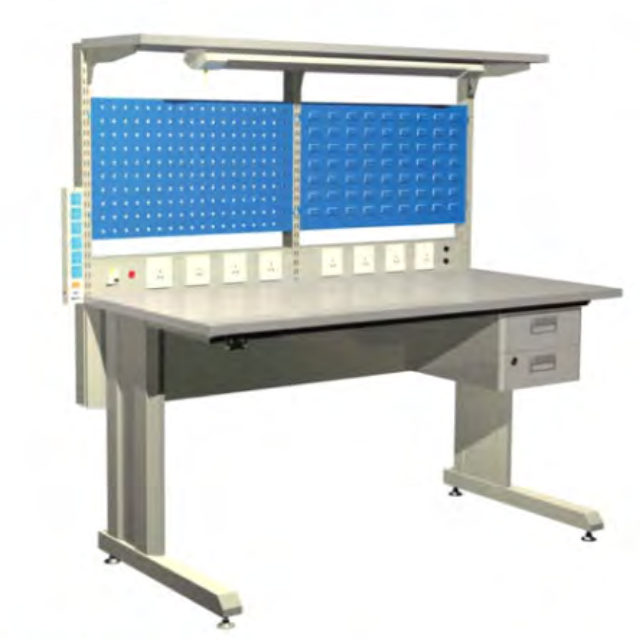The modern electronic society faces substantial financial risk along with operational interruption from Electrostatic Discharge (ESD). Organizations that manufacture electronic equipment must strictly adhere to international standards when building their ESD workstations. This paper demonstrates the primary distinctions operating between ANSI/ESD S20.20 and IEC 61340-5-1 ESD standards and presents information about the certification process and worldwide regulatory requirements that global buyers must understand.
ANSI/ESD S20.20 vs. IEC 61340-5-1
Anyone engaged in ESD standard work should know the key contrasts between ANSI/ESD S20.20 and IEC 61340-5-1. The two standards share the objective of ESD control for electronic components yet they have essential differences.
ANSI/ESD S20.20
Applicability: Organizations in the United States primarily use this standard to protect electronic components because it is widely recognized.
Focus: This standard devotes efforts to document all steps necessary for implementing and maintaining complete ESD control programs. An electrostatic protected area needs to adhere to industry standards as the main goal of the process.
Approach: ANSI/ESD S20.20 asserts that a proper ESD control program should combine grounding procedures with process qualification and protective encasing and personnel grounding and equipment handling protocols.
IEC 61340-5-1
Applicability: The European and Asian markets give preference to this standard when it comes to its application.
Focus: IEC 61340-5-1 establishes system-level management of ESD control with a requirement to evaluate and decrease risks through a conceptual plan.
Approach: This approach contains whole documentation about ESD protective packaging together with grounding strategies along with equipment evaluation strategies. The standard outlines particular instructions for performing checks that verify proper function of ESD control systems.
Certification Processes
The certification procedure requires organizations to demonstrate their ESD control procedures meet all necessary standards during a strict assessment process. The certification procedures for ANSI/ESD S20.20 and IEC 61340-5-1 operate as explained in this edited summary.
For ANSI/ESD S20.20
Initial Assessment: A preliminary evaluation must be carried out to determine specific areas that require enhancement according to the standard’s requirements.
Documentation: Organizations should create extensive documentation that includes both an ESD control program and its related protocols.
Implementation: All personnel need training about ESD control measures through regular sessions to learn the procedures effectively.
Organizational personnel will put the control procedures documented in operation.
External Audit: Roundtable third-party auditors must execute independent assessment of the ESD control program.
Certification: If an organization passes the audit successfully it receives certification according to ANSI/ESD S20.20 standards.
For IEC 61340-5-1
Gap Analysis: Procedures for gap analysis examine how existing protocols match up against the standards required by the audits.
Risk Assessment: The organization should conduct risk assessments for determining ESD risks followed by establishing mitigation plans.
Documentation and Training:The necessary paperwork should receive expert development and workers should get comprehensive training following IEC 61340-5-1 rules and guidelines.
Implementation and Internal Review: The execution of control solutions must happen alongside periodic internal assessments to validate adherence.
Third-Party Audit: The organization will submit to inspections from recognized independent certification bodies.
Obtaining Certification: The achievement of certification depends on passing the audit procedure.
Regional Compliance Variations
Global ESD standards attempt to give uniform guidance yet buyers worldwide need to address different regional compliance standards.
North America: Most companies in the United States need to meet ANSI/ESD S20.20 standards to continue operations. Electric components manufacturers and suppliers face severe consequences when they fail to follow the standard because it ensures both penalty avoidance and product authenticity.
Europe: The nations in Europe implement IEC 61340-5-1 standards which become necessary for market success and equipment reliability. The need for adjustments lies in following regional regulatory requirements.
Asia: The Asian markets including China, South Korea and Japan utilize IEC standards yet incorporate specific regional regulations into their requirement standards to adapt to market specifics.
Rest of the World: Different regions which are outside the World follow either standard based on industrial needs and regulatory requirements present in their jurisdictions.
The smooth operation of ESD control systems in different regions requires businesses to understand how local compliance requirements differ from one border to another in order to maintain supply chain security.
Conclusion
Global buyers should remain equal to ESD workstation safety standards to ensure safety of sensitive electronic components. Ansi/ESD S20.20 and IEC 61340-5-1 highlight the importance of appropriate guidelines based on the requirements of the regional and industry. By understanding certification processes and regional compliance variations, organizations can maintain ESD protection protocols better, eventually leading to increased product quality and operational efficiency.







